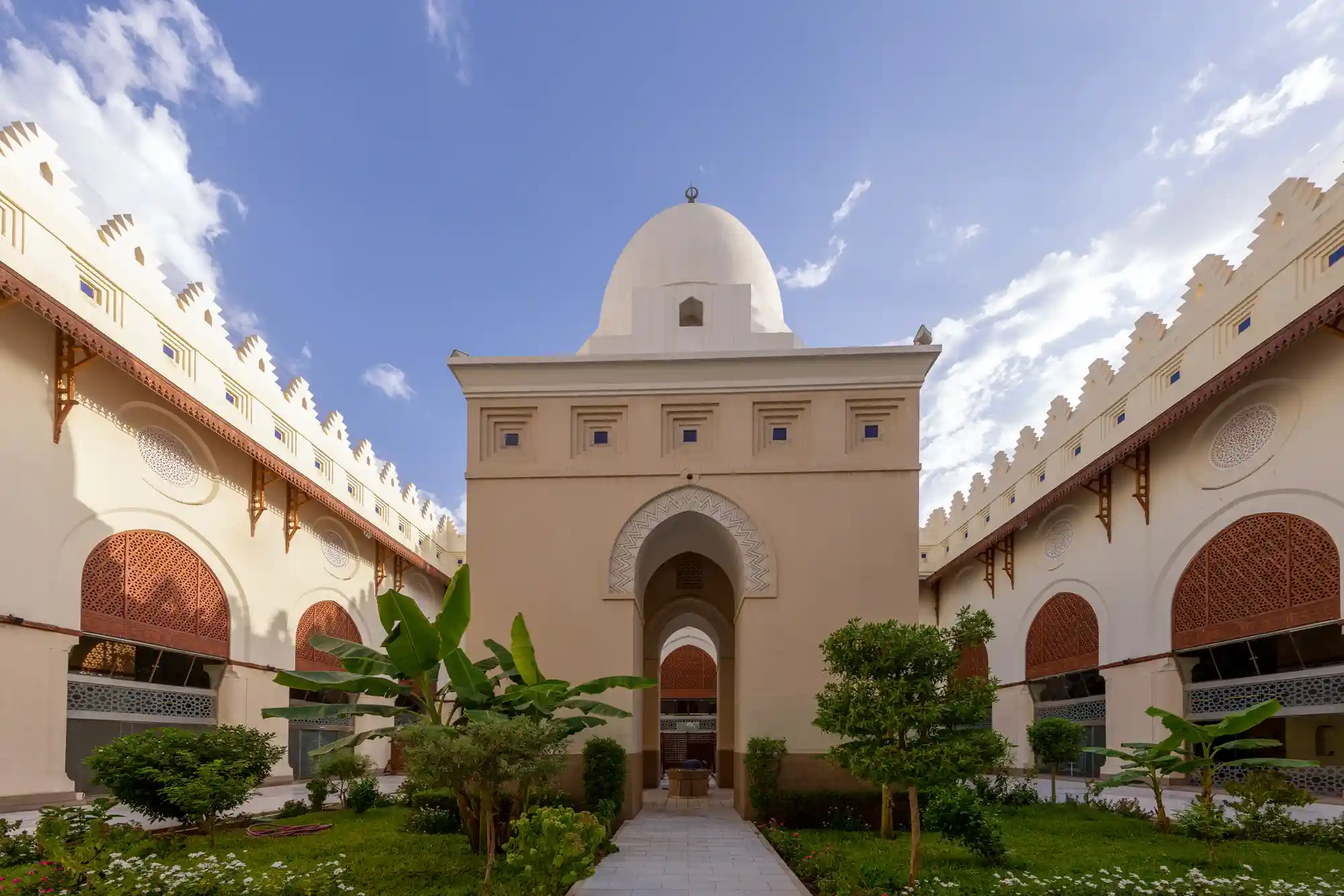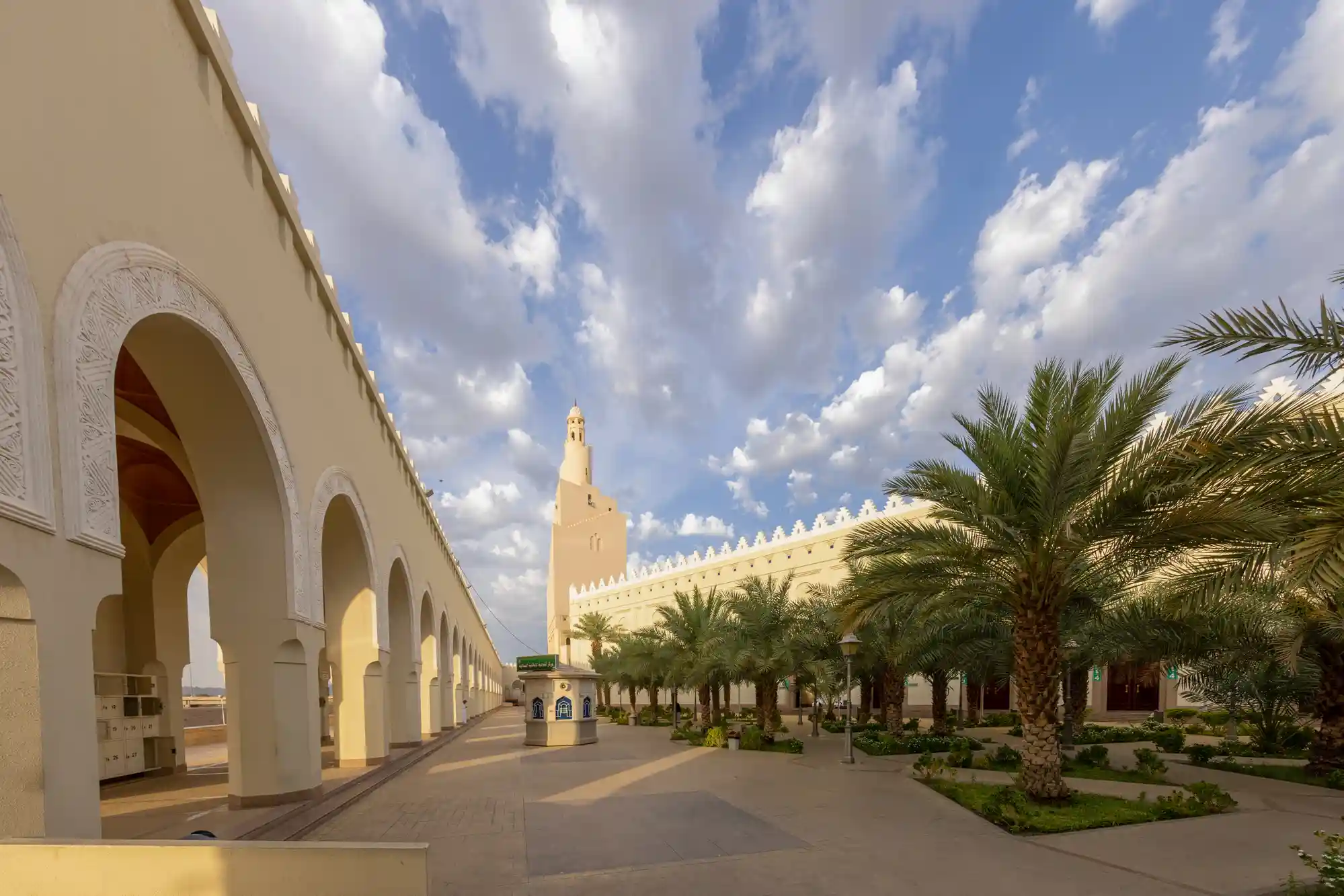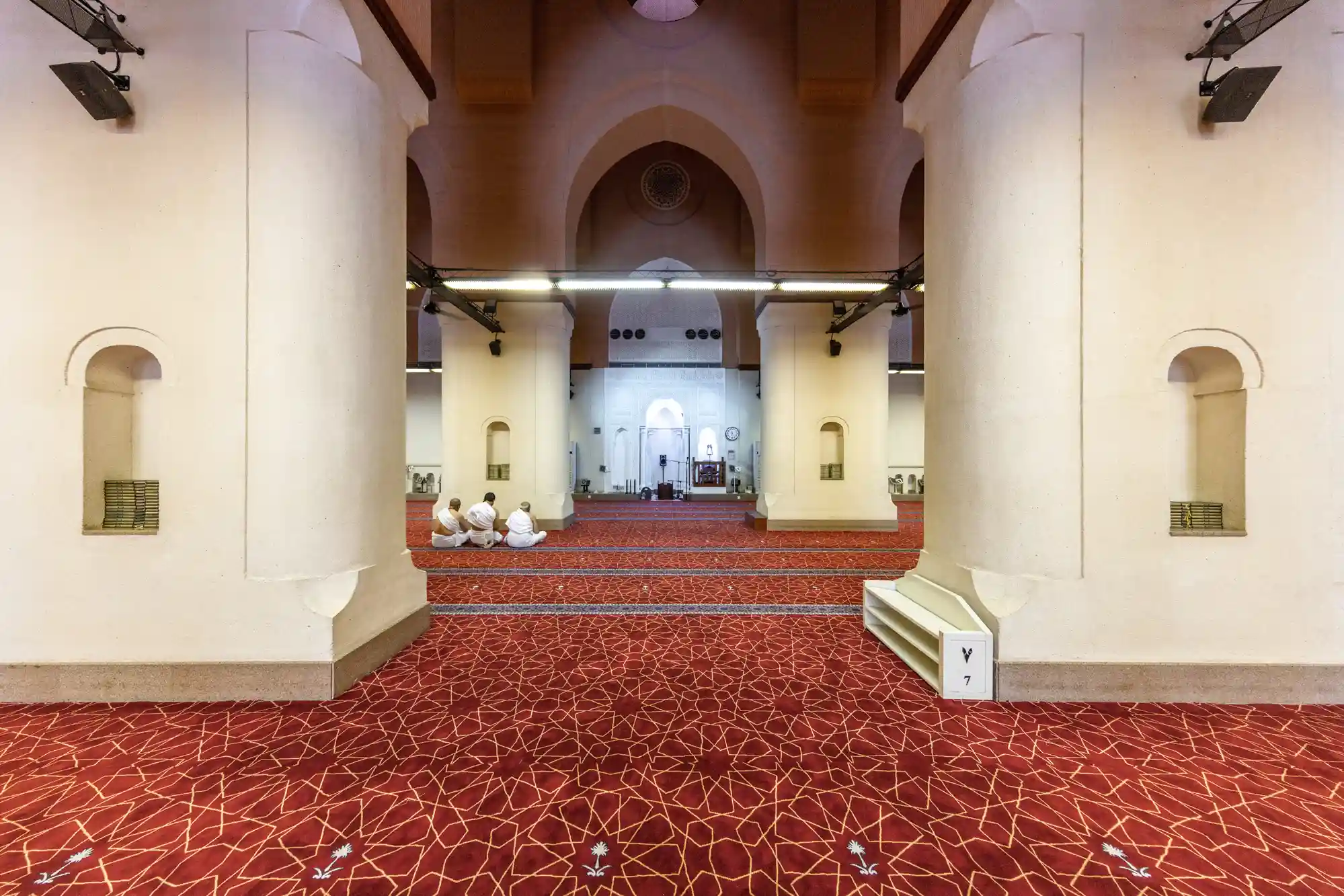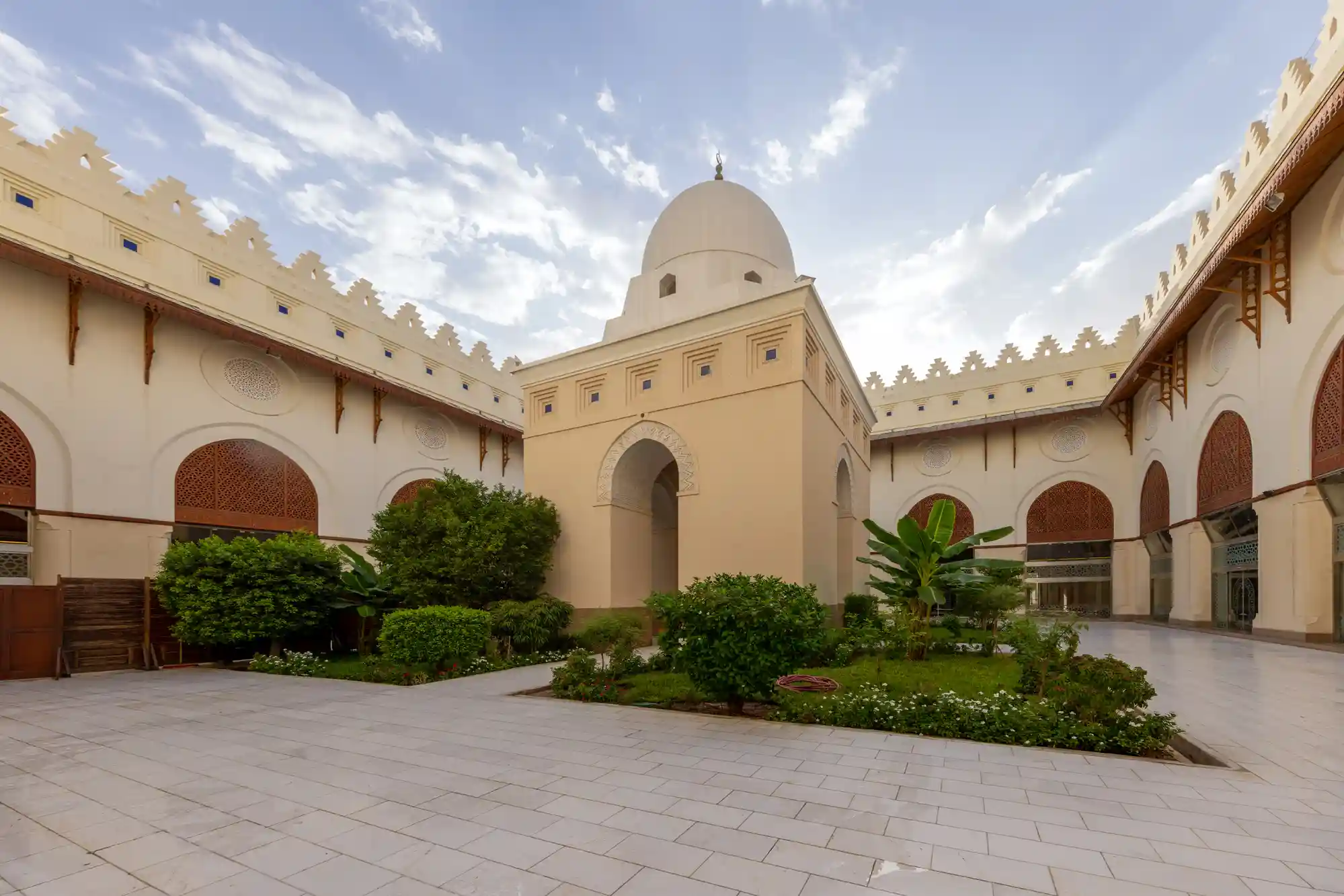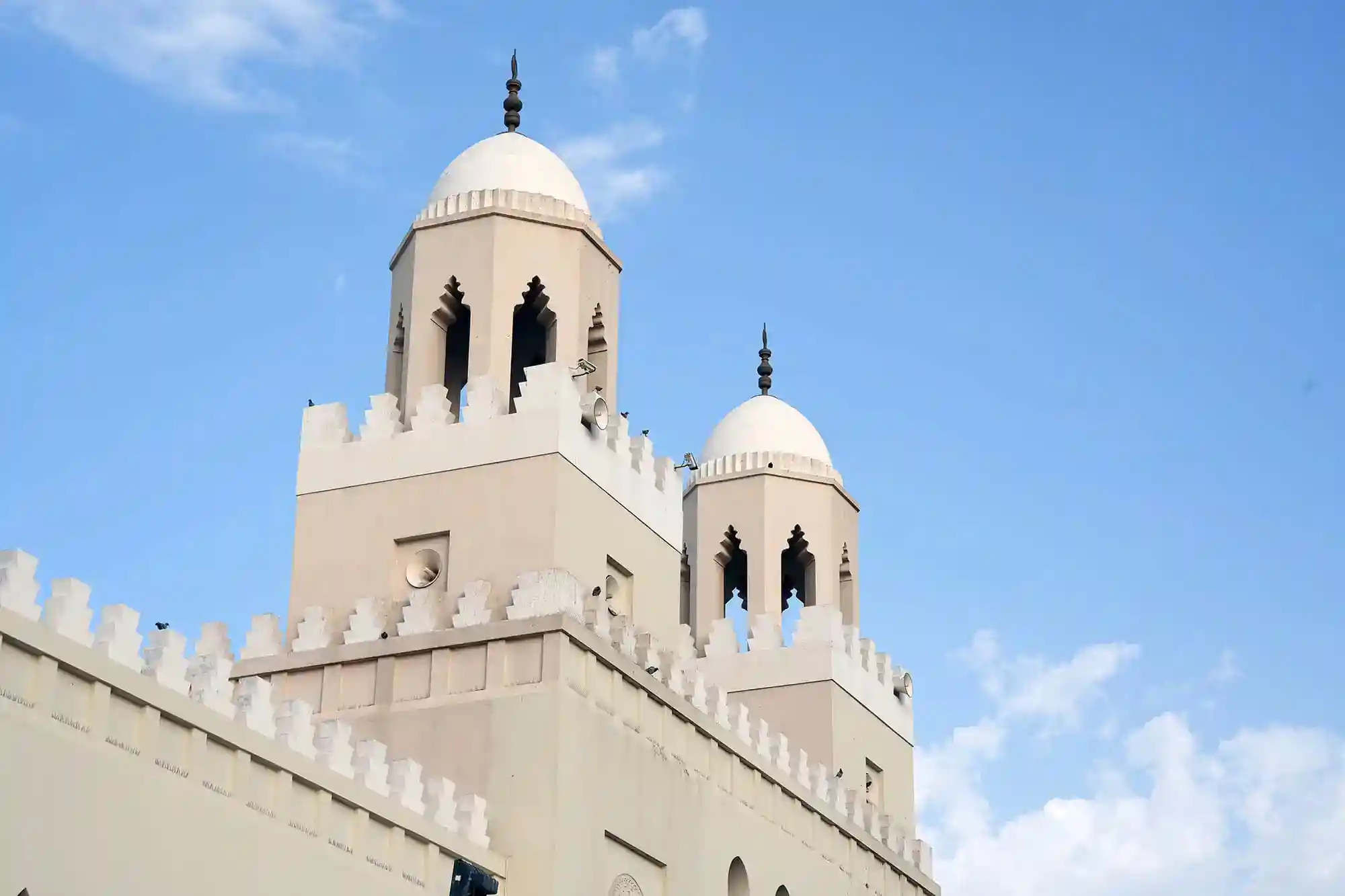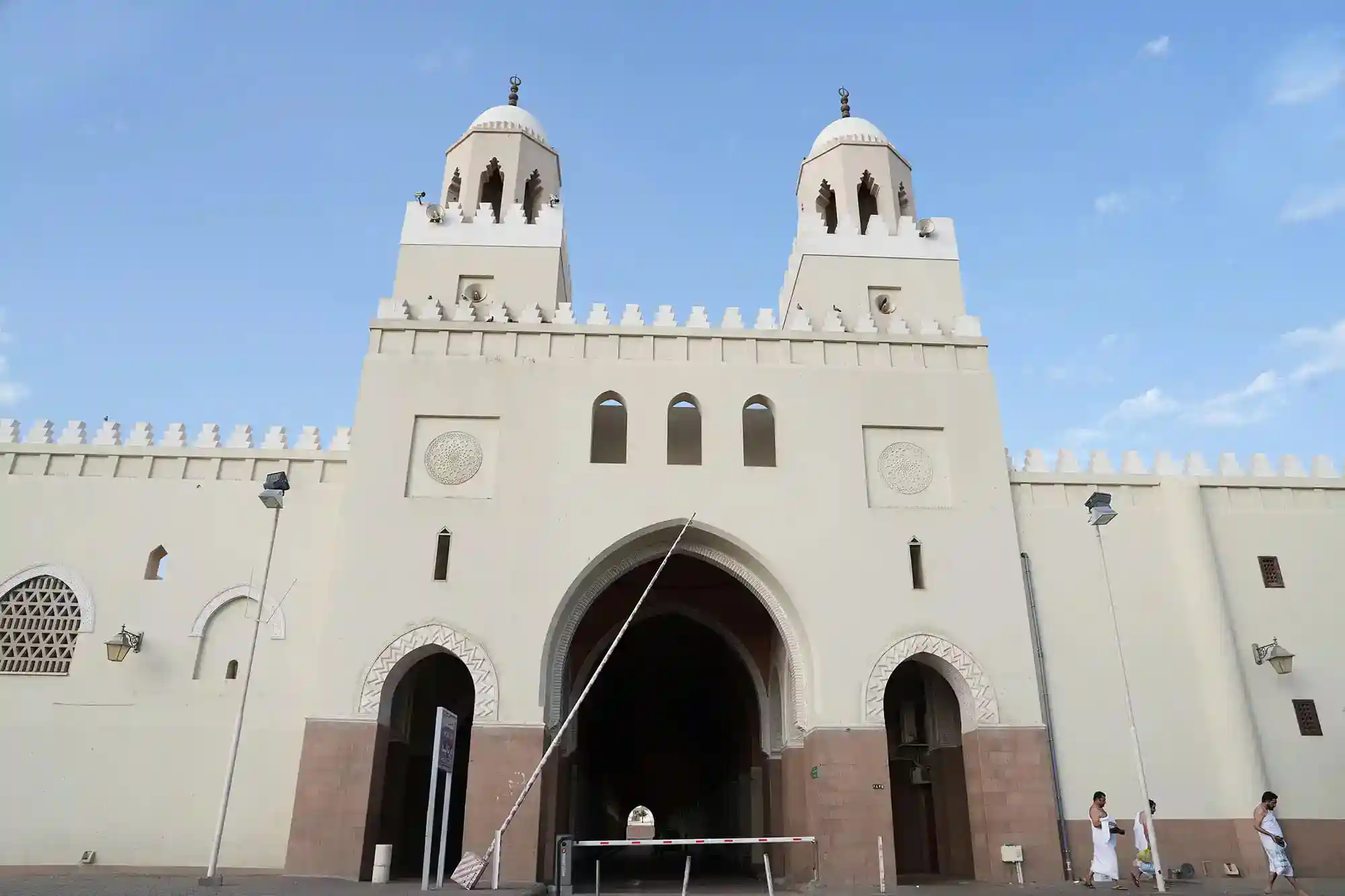Historical Significance:
The Prophet (ﷺ) used to stop under a tree in Dhul Hulaifah to enter into
ihramfor Hajj and ‘Umrah. He said: “Someone came to me tonight from my Lord while I was in Al-Aqiq (valley), and said to me, "Offer prayer in this blessed valley,"” which is the miqat of the people of Madinah and those who go past it. It is the farthest miqat from Makkah. Perhaps the wisdom behind this is that the people of Madinah will not have to spend a long time in which they are neither in a sanctuary nor in the state of
Ihram;hence, their reward will be maximized.
Phases and Saudi care:
Built with stones in the reign of Omar ibn Abdulaziz, the mosque was renewed in various eras. It was too small to meet the needs of Hajj and ‘Umrah pilgrims.
King Faisal ibn Abdulaziz ordered the renewal and expansion of the mosque. The major expansion took place during the reign of King Fahd ibn Abdulaziz, turning it into a magnificently architectural edifice in its design, area, facilities, and services.
Magnificent Blessed Place:
The mosque is located in Dhul Hulaifah, southwest of Madinah, on the western side of al-Aqiq Valley, 14 km away from the Prophet’s Mosque. From this place, Hajj and ‘Umrah pilgrims start the
talbiyah: "At Your service, O Allah, at Your service. You have no partner. All praise, grace and sovereignty belong to You. You have no partner."
The mosque is square in shape with a unique design. It has a spiral minaret, 62 meters tall, and arches dovetailed into domes 16 meters high from the ground. The mosque area, including its facilities, is 178,000 square meters. It includes two blocs of buildings separated by a 1,000 m
2yard. There are more than 500 toilets, and next to them are places of
Ihram, washbasins for ablution and washing, parking lots, and a market that meets pilgrims' needs. There are also green spaces abounding with palm and other trees.
